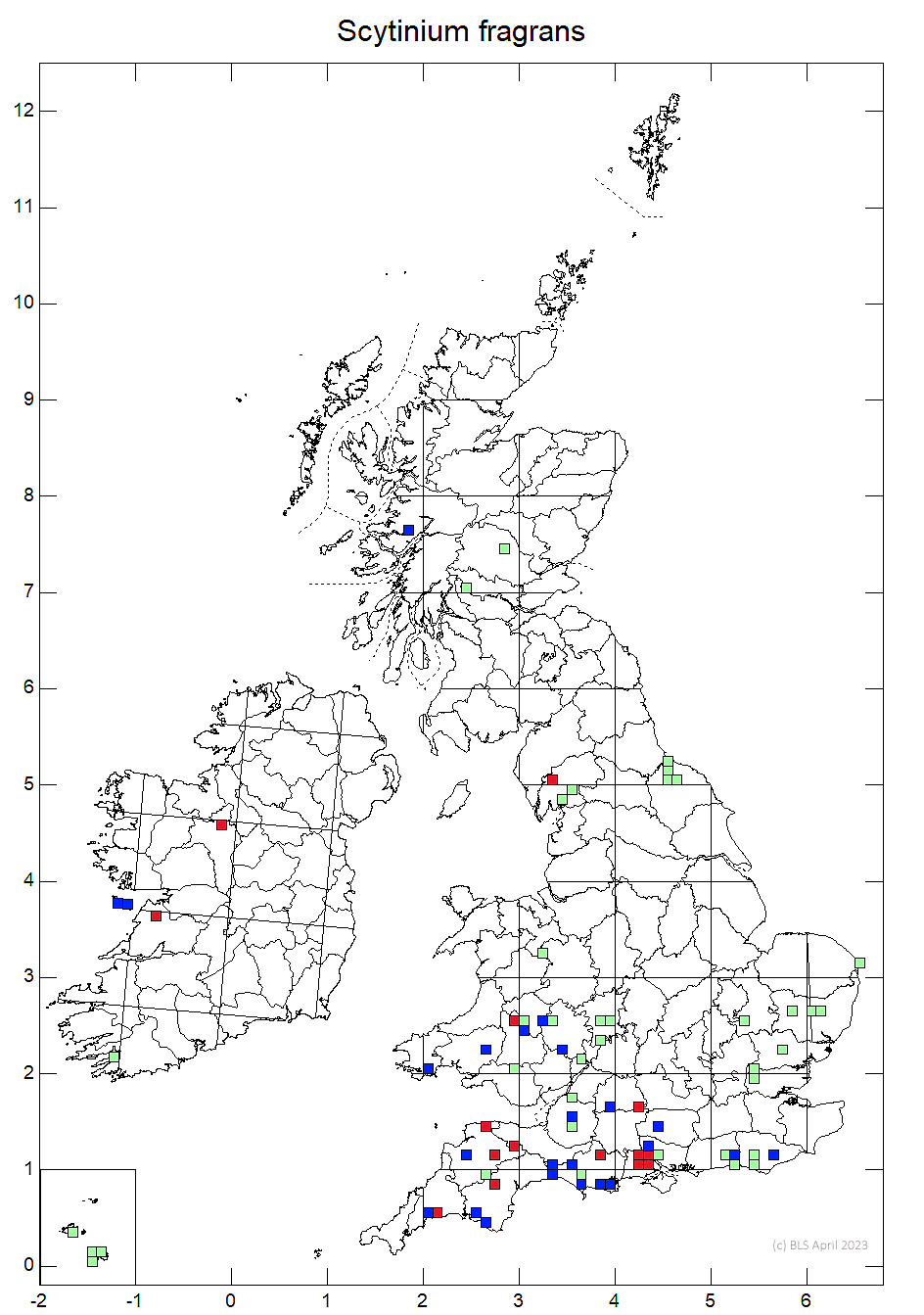One of the smaller jelly lichens. A vertical section through the thallus will show that it lacks a cellular cortex and so can be separated from superficially similar Leptogium species such as L. subtile. The minute channeled to flat thallus lobes, less than 1.5mm wide, form in stellate groups up to half a centimetre in diam.. Occasionally globose papilla-like lobes form around the thallus margins and occasionally on the surface. It is commonly fertile with apothecia crowded in the centre of the thallus. (RGW)
It occurs on nutrient and base-rich bark of mature and veteran trees such as elm and sycamore, often associated with nutrient enrichment from run-off from rot holes and decay in the trunk above. It has rarely been reported on basic rock and never in this habitat in Wales.
There were a scatter of records mostly from old elms in Radnor, Pembroke and Carmarthen. Other records on critical examination have proved to be other species. The Radnor population on mature elm at Stanner Rocks appears to have been lost due to Dutch elm disease. The Carmarthen population at Castle Woods Llandeilo on elm mostly suffered a similar fate, though one sycamore still supported this lichen in 1994 (see report below). The Pembroke population has not been localised and its current status there is unknown.
Survey for Collema fragrans, Castle Woods, Llandeilo. Dec 2011 RG Woods Plantlife Cymru.
Following a reappraisal of the current status of C. fragrans in Wales it became apparent that with the exception of Castle Woods, all known sites were on mature elms that had died as a result of Dutch Elm disease.
Alan Orange in his survey of the lichens of Castle Woods in 1994 reported finding C. fragrans on one mature sycamore trunk on the ridge to the east of the old castle at SO615218 in compartment C30 associated with the mosses Brachythecium rutabulum, Amblystegium serpens and small quantities of the mosses Neckera complanata and Eurhynchium praelongum. An afternoon survey in relatively poor weather demonstrated the habitat still exists but no C. fragrans could be found. Disappointingly with the exception of a few thalli of common Peltigera spp. there were no other cyanobacteria containing lichens. The bark of a few of the sycamore trunks was sufficiently base-rich to support bryophytes such as Anomodon viticulosa and Neckera complanata so substrate chemistry may not be the limiting factor. Whilst some lower trunks were shaded by evergreens such as box it seemed unlikely that this could be the cause of the loss, if real. Moreover the box supported a range of epiphyllous cryptogams of interest in their own right. Poor light precluded the searching of mature sycamores away from the area of the grid reference. This is recommended. It should also be noted that this lichen is likely to be found around the edges of rain tracks, sap weeps, rot holes and wounds. Any tree surgery or felling should only be carried out after careful checks for Collema fragrans.
It is uncertain whether this species still survives in Wales. (RGW)
- Log in to post comments

